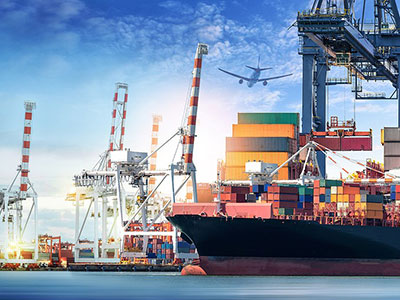
Heightened Geopolitical Risk Is the New Normal
There is substantial geopolitical risk with China. Look no further than the South China Seas. Philippine officials say Chinese forces seized two naval boats in a disputed South China Sea shoal. A few days prior, a Philippine ship and a Chinese vessel collided. It is a risky situation in the South China Seas. If you control the South China Seas, you control a significant portion of global maritime trade. Almost $3.5 trillion dollars pass through the South China Seas annually. Of course, we have discussed China threatening Taiwan with military exercises (as Taiwan produces 90% of the advanced computer chips for the world, powering artificial intelligence and much more).
Unfortunately, it also is occurring close to home. A fleet of Russian warships, including a nuclear powered submarine were in Cuba, creating risk and tension in the U.S. Not too long ago, a Chinese spy balloon traversed the the U.S. And China is purchasing significant land in the U.S. and happens to own land next to 19 U.S. military bases. Speaking of military bases, according to the Maritime Executive, U.S. military bases are ejecting foreign nationals 2-3 times a week and are seeing an increasing number of suspicious drone overflights.
And certainly there are global trade challenges in the Suez Canal with Houthi rebels attacking ships. If that wasn’t enough in combination with the Russia-Ukraine war and the Israel-Hamas war, piracy threats are increasing again, adding further risk into the mix.
Risks Exploding in the Global Supply Chain
In addition to geopolitical risk, there are a myriad of risks in the supply chain. For example, as supply chains are more interconnected, cyber risk is heightened. As distances increase, the likelihood of running into weather events, strikes, regulatory issues, and other disruptions arise. For example, a Canadian border strike was recently averted at the last minute, making it the most recent in a series of strikes or potential strikes impacting the supply chain. From auto workers to ports to package carriers and rail, potential strikes and labor unrest appears to be commonplace. From the regulation standpoint, the logistics industry has been flipped on its head with changing regulatory environments in states like California. And BMV was recently caught up in an issue related to Chinese forced labor, negatively impacting the end-to-end supply chain.
The shortage of high-skilled talent is quickly becoming one of the largest risks in supply chain. As more companies automate, digitize, and roll out advanced technologies such as artificial intelligence and autonomous concepts, low-skilled jobs will disappear. On the other hand, high-skilled jobs are in high demand. Yet, are executives mentoring, training, and upskilling quickly enough to keep up with the transformation?
Listen to our recent interview on KNX radio about these precarious set of circumstances and the effect on consumers.
Click here to Download the MP3.
Path Forward: Think Three Steps Ahead
The successful companies will be thinking three steps ahead of the rest. For example, they realize they cannot control the risk-laden hand they have been dealt and are pivoting. Not every situation is the same, but smart executives are quietly executing smart strategies. For example, here are a few of the strategies they are deploying:
- Regional supply chains: They are taking control of their supply chains and focusing on regionalizing their supply chains with reliable suppliers. For example, supply North America from North America. Supply Asia from Asia etc.
- Manufacturing Renaissance: One of the byproducts of a regional supply chain is a manufacturing renaissance. Since manufacturing expands value (according to the National Association of Manufacturers, for every $1 spent in manufacturing, there is a total impact of $2.69 to the total economy. Its no wonder smart states are offering incentives.
- Rollout of modern ERP systems with advanced technologies: As recently discussed with the advancements rolled out at SAP Sapphire, modern, proactive ERP companies are hand-in-hand with artificial intelligence, IoT, digital twins, predictive analytics and much more.
- Hoard top talent: There is no doubt that the most successful companies five years from now will be those that invest in top talent. They will attract, retain, develop, train, mentor, upskill, etc. Our most precious asset will be top talent. Does your top talent know they are valued? Are thinking outside the box to put together creative strategies to attract and retain top talent?
- Personalize customer value & collaborate with your partners: Don’t skate to where the puck is, skate to where the puck is going. Do you know how to stand out from the crowd and provide superior customer value, personalize service and create partnerships with your top customers and supply chain partners?
- Advanced processes: Start with SIOP (Sales Inventory Operations Planning) to stay on top of changing conditions, be ahead of strategies to grow customer value and ensure your end-to-end supply chain will deliver that exceptional value profitably, reliably, and resiliently?
The Bottom Line
We can no longer be complacent, even for a week, day or minute. Successful companies are thinking three steps ahead and creating a resilient end-to-end supply chain. They are willing to pivot, encourage failure, even whoppers so long as the culture supports learning, innovation and success, take the leap into new technologies, processes and concepts, and value their people, customers and partners. The investment and effort alone will rule out this endeavor for the faint of heart, yet it will create winners for decades to come.
If you are interested in reading more on this topic:
Succeeding with Regional Manufacturing & Optimizing Supply Chain



